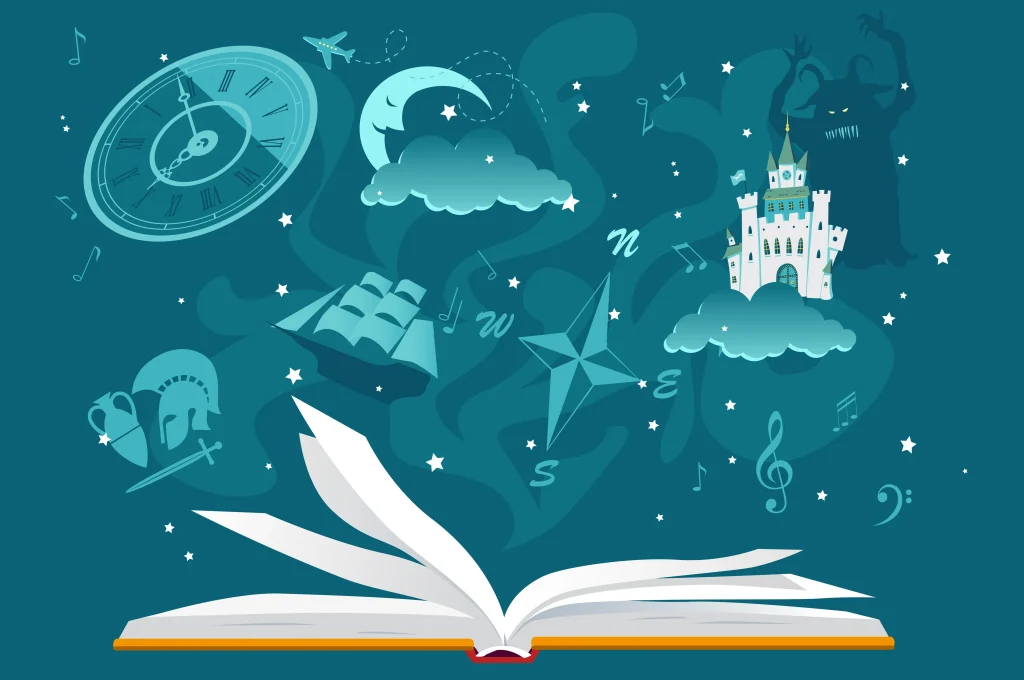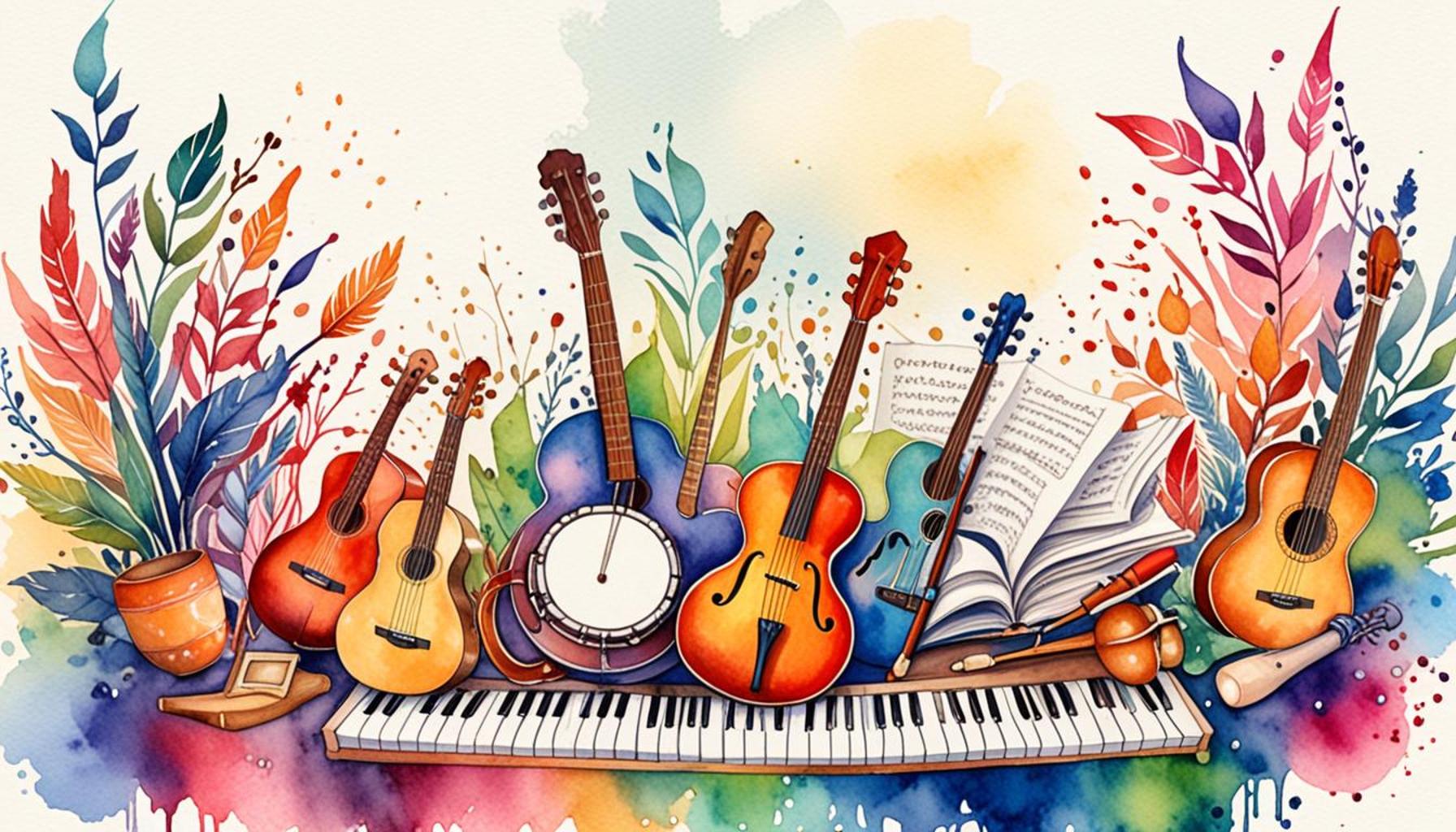The Art of Storytelling: Structures and Styles that Transform Stories

The Power of Storytelling Across Cultures
Storytelling is an ancient art form that transcends cultures and time. It shapes our understanding of the world, connects us to our roots, and ignites our imagination. From the intricate oral histories of indigenous peoples to the modern-day books and films that hold us captivated, narratives are woven into the very fabric of human communication. Through these tales, individuals can express their identity, share wisdom, and reflect the complex tapestry of human experience.
In Nigeria, tales of heroes and moral lessons are woven through rich oral traditions. The country’s diverse ethnic groups each contribute their own unique styles and themes to the storytelling tradition. From the captivating folktales of the Yoruba, which often feature clever tricksters like Tortoise, to the vibrant fables of the Igbo, which impart lessons about honesty and integrity, storytelling serves as a powerful tool for education and cultural preservation. For instance, stories like “The Tale of the Tortoise and the Birds” raise essential questions about selfishness and community. Such narratives not only entertain but offer guiding principles for ethical behavior and social cohesion.
Key Components of Effective Storytelling
To master the art of storytelling, one must understand its essential structures and styles. There are core elements that define impactful narratives, which can resonate well across various audiences:
- Conflict: This is the driving force that propels the story forward. It creates tension and engages the audience, making them invested in the outcome.
- Character Development: Creating relatable and multi-dimensional characters allows readers to connect emotionally with the story. Characters should evolve throughout the narrative, facing challenges that shape their personalities.
- Setting: Establishing a vivid backdrop that immerses the audience is crucial. It adds depth and context, allowing readers to visualize the world in which the characters reside.
- Plot Structure: Utilizing frameworks like the hero’s journey or the three-act structure helps in organizing the story into a coherent sequence that builds anticipation and resolution.
- Style: Adopting unique tones and perspectives engages the reader, whether through humor, drama, or reflective narration.
With these elements, stories can evoke emotions, inspire change, and challenge perspectives. Delving deeper into storytelling offers insights into effective communication methods, which are crucial for both personal and professional growth. Employers increasingly value skills like empathy and narrative construction, which are essential in team collaboration and leadership.
A Window into Transformation
As we explore various storytelling styles, we reveal the ways in which they transform ordinary tales into extraordinary experiences. The fusion of traditional narratives with contemporary influences not only keeps the art of storytelling dynamic but also ensures its relevance in modern society. For example, Nigerian filmmakers are now adapting classic folktales into films that resonate with younger audiences, thus bridging generational gaps. This creative evolution also allows new stories to emerge, reflecting current societal issues while rooted in cultural heritage.

As we celebrate the richness of storytelling, it becomes clear that this craft is not just about entertainment; it is a vital means of cultural preservation, education, and communal bonding. So the next time you engage with a story—whether through a movie, book, or oral narrative—remember the essential elements that make these tales valuable threads in the fabric of our societies.
SEE ALSO: Click here to read another article
Essential Storytelling Structures that Engage and Inspire
When it comes to storytelling, structures serve as the blueprint that organizes the narrative, guiding both the storyteller and the audience through the emotional and thematic journey. Among the most prevalent frameworks in storytelling are the linear structure, the non-linear structure, and the circular structure, each offering unique advantages for engaging the audience in various ways.
Linear Structure: The Classic Approach
The linear structure is perhaps the most recognizable and widely used storytelling format. This approach unfolds events in a sequential manner, starting from the introduction and moving through rising action to a climax and eventual resolution. Classic tales, such as those found in Nigerian folklore, often thrive in this structure, allowing for clear moral lessons and character growth that resonate deeply with the audience. For instance, in the well-known folktale “The Lion and the Mouse,” readers follow the straightforward sequence of events that illustrates themes of humility and friendship.
Non-Linear Structure: Creativity Unleashed
In contrast, the non-linear structure offers a more experimental approach to storytelling. By reshuffling the events or incorporating flashbacks and multiple perspectives, this style invites the audience to piece together the narrative actively. This structure has been increasingly utilized in contemporary literature and cinema to reflect the complexity of human emotions and experiences. Nigerian filmmakers, such as those in the indie film scene, are embracing this style to create engaging stories that explore intertwined relationships and societal challenges. By defying traditional norms, non-linear narratives invite viewers to engage in a dialogue with the material, fostering a deeper understanding of the characters’ motivations.
Circular Structure: A Return to the Beginning
The circular structure, which concludes in a way that mirrors the beginning, plays with the notion of transformation and growth. This storytelling technique often highlights how characters evolve over the course of their journey while reiterating the original themes presented. Consider the story “Things Fall Apart” by Chinua Achebe, which, although linear in its initial arcs, returns to fundamental themes of struggle and change after the protagonist’s actions lead to irreversible consequences. This circularity resonates strongly in many traditional narratives, reinforcing cultural cycles of life and moral truths.
The choice of structure significantly influences how stories are perceived and understood. By mastering the art of these structures, writers can create compelling narratives that captivate audiences and elucidate complex human experiences in a relatable manner. Each structure has the potential to evoke distinct emotional responses, revealing the vast capabilities storytelling holds in shaping perspectives.
Styles That Enhance the Narrative
Beyond structure, the style of storytelling is equally crucial in transforming basic narratives into unforgettable experiences. The tone, diction, and perspective shape how the audience interprets the message and engages with the characters. Writers often experiment with various styles, such as realism, magical realism, or satire, to create layers of meaning. In a nation as diverse as Nigeria, each storyteller brings their cultural backgrounds and personal insights into their narratives, allowing for a rich tapestry of storytelling that reflects a multitude of voices.
In summary, understanding the relationship between storytelling structures and styles equips aspiring storytellers with the tools necessary to craft engaging and impactful narratives. Much like a painter who selects their brushstrokes wisely, storytellers can choose their structural approach and stylistic elements to convey their message effectively while touching the hearts of their audience. As narratives evolve through these frameworks, the art of storytelling remains a vital means of cultural expression and communication.
| Structure | Impact |
|---|---|
| Three-Act Structure | Provides a clear framework for rising action, climax, and resolution. |
| Nonlinear Narrative | Engages audience curiosity by revealing the story in fragmented segments. |
| Character Arcs | Demonstrates transformation, making characters relatable and memorable. |
| Dialogue Techniques | Enhances authenticity and reveals character motives effectively. |
| Symbolism | Adds depth by imbuing objects or events with significant meaning. |
Exploring these structures unveils the intricate mechanics behind compelling storytelling. The Three-Act Structure is a timeless method that organizes a narrative into a clear beginning, middle, and end, ensuring that the audience remains engaged throughout the journey. In contrast, a Nonlinear Narrative captivates audiences by juggling time and events cleverly, sparking curiosity as the pieces come together.Moreover, well-crafted Character Arcs are vital; they not only depict change and growth but also resonate with readers on a personal level, fostering empathy. Implementing strategic Dialogue Techniques enhances authenticity, making characters’ interactions both realistic and revealing.Lastly, the use of Symbolism enriches the narrative, allowing every object or situation to carry deeper meanings that linger in the minds of the audience, inviting repeated analysis and contemplation. Each aspect discussed serves to elevate storytelling, enticing readers to delve further into the art form.
YOU MAY ALSO LIKE: Read read another article
Exploring Diverse Narrative Styles That Resonate
While the structures provide a backbone to storytelling, the style in which a story is told breathes life into it. The choice of narrative style can shift the entire dynamic of the story, thus significantly affecting the audience’s perception and emotional response. Within the Nigerian context, a rich variety of storytelling styles enhances the depth and cultural relevance of narratives.
Realism: Capturing Life as It Is
Realism is a style that aims to represent everyday experiences and struggles authentically. It engages the audience by directly reflecting relatable scenarios, societal challenges, and human emotions. Nigerian authors such as Buchi Emecheta and Achimugu Nma utilize this style to illustrate the complexities of life, focusing on themes such as gender dynamics, economic hardship, and the pursuit of identity. Through their stories, readers connect to the characters’ realities, allowing them to empathize with the struggles portrayed in the narrative. The straightforward language and vivid imagery create a mirror into society, urging readers to examine their own lives and the world around them.
Magical Realism: Blending the Extraordinary with the Ordinary
On the other hand, the captivating style of magical realism merges fantastical elements with realistic settings, where supernatural occurrences are treated as commonplace. This style is prevalent in Nigerian storytelling, vividly illustrated in Ben Okri’s acclaimed novel, “The Famished Road.” Here, the protagonist Azaro navigates both his vivid dreams and the harsh realities of life in a Lagos slum. The narrative transcends the traditional boundaries of reality, inviting readers into a world where the impossible becomes possible. As people from different cultures connect through sharing extraordinary experiences, magical realism opens up discussions on spirituality, history, and the resilience of the human spirit.
Oral Tradition: The Soul of Nigerian Storytelling
A significant aspect of storytelling in Nigeria is the oral tradition, where tales are passed down through generations. The oral style of storytelling is characterized by its performative nature, involving musical elements, proverbs, and audience participation. It reflects the values and belief systems of different ethnic groups within the country, such as the Yoruba and Igbo communities. The use of repetitive phrases and engaging rhythms helps reinforce the story’s core messages, making it not only a narrative but a communal experience. Figures like the Griots in the northern regions weave intricate tales that keep the past alive, ensuring that wisdom and cultural identity endure through the ages.
Satire: A Reflective Lens on Society
Another powerful style in storytelling is satire, which uses humor and exaggeration to critique societal norms and behaviors. Nigerian writers like Wole Soyinka and Helon Habila skillfully employ satire to expose political corruption and social injustices. Through their narratives, they provoke thought and encourage audiences to reflect on prevailing issues while eliciting both laughter and discomfort. This duality makes satire a potent tool for change, as it not only entertains but also challenges perceptions, fostering a more informed and critically aware society.
The diverse styles of storytelling enrich the narrative landscapes and allow for creative expressions of the human condition. By exploring these varied approaches and integrating them with distinctive storytelling structures, writers can craft narratives that resonate powerfully with audiences, igniting conversations around pivotal themes and transforming mere stories into cultural movements. As Nigerian literature continues to evolve, these styles remain essential elements in the quest for deeper understanding and connection.
CHECK OUT: Click here to explore more
Conclusion: The Transformative Power of Storytelling
In exploring the myriad of structures and styles that drive storytelling, it becomes evident that the art of narration is not merely about weaving words together; it is a profound means of connecting deeply with audiences. Whether through the stark authenticity of realism, the enchanting threads of magical realism, the rich vibrancy of oral traditions, or the incisive humor of satire, each approach provides unique insights into the human experience. Nigerian literature stands as a testament to this diversity, integrating cultural nuances that resonate with both local and international readers.
Storytelling serves as a mirror reflecting societal triumphs and struggles, allowing us to engage in critical dialogues about prevailing issues. The multifaceted styles enable writers to not only entertain but also provoke thought, inspire change, and preserve cultural identity. As we traverse through different narratives, we witness a tapestry woven from the shared experiences of diverse communities. The rich pool of narratives empowers individuals to view their realities through new lenses while encouraging empathy towards different perspectives.
As we continue to champion the art of storytelling in Nigeria, it remains crucial for creators to harness these structures and styles. By doing so, they can amplify voices, foster cultural appreciation, and contribute to a narrative landscape that is both vibrant and enlightening. In embracing the transformative potential of storytelling, we pave the way for new generations to convey their unique stories, ensuring that the art continues to evolve, inspire, and unite across boundaries.



